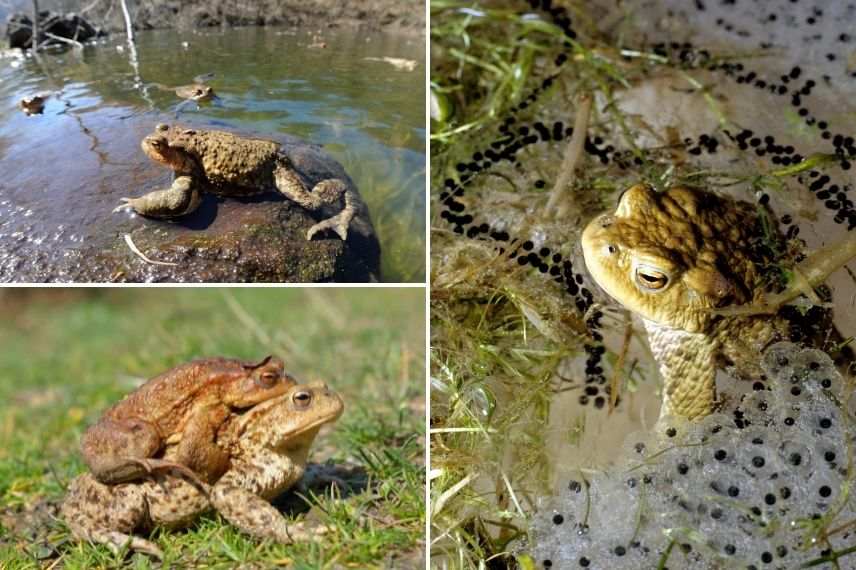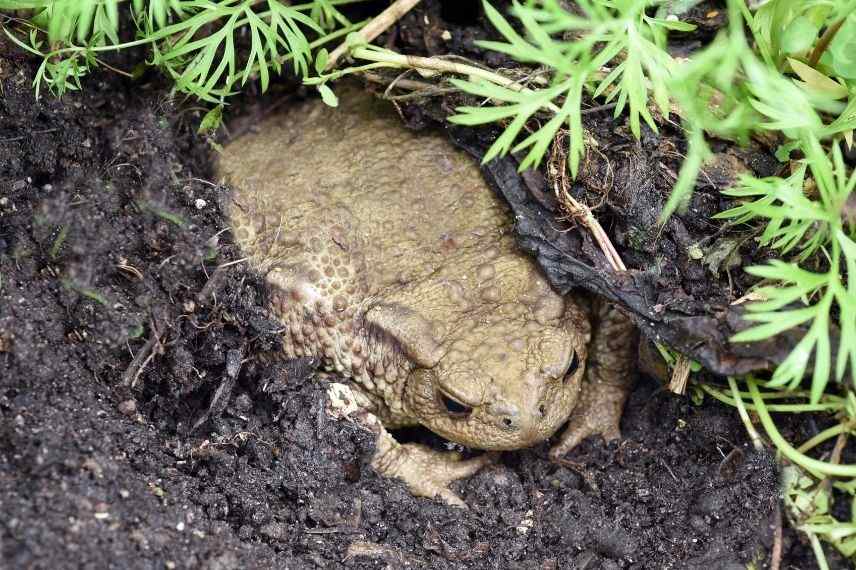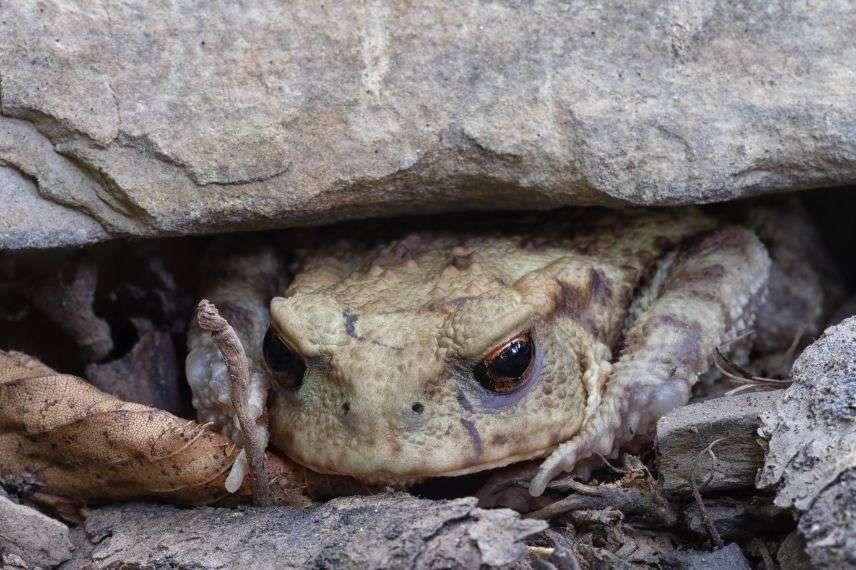
Toad, a useful animal to preserve
Tips and tricks to attract a toad to your garden
Contents
The common toad or Bufo bufo is part of the auxiliary animals in gardens, alongside birds and hedgehogs. It indeed has numerous benefits for gardeners as it helps eliminate insects and other small pests harmful to plants, such as caterpillars and slugs. Since it is a protected species in France, you cannot collect it from a site to bring it to your garden. Instead, you should set up everything to attract it! Discover our tips and tricks to encourage regular visits from the toad!
The toad, a common and protected animal
The toad most commonly found in our gardens is the common toad or Bufo bufo. However, there are many other species, such as the cane toad found in Australia and South and Central America, or the midwife toad present in Europe.
It measures between 9 and 11 cm, with the female being larger than the male. With its small, stocky body, short legs, globose eyes, and horizontal pupils, it is easily recognisable. It can be brown, grey, reddish, or green-yellow in colour.
This animal is protected in France. You cannot take it and bring it to your garden. It must come on its own or be attracted by all the arrangements you have prepared for it.
The skin of the toad is covered in pustules, which are actually glands. They secrete a venom that serves as an antiseptic, antibiotic, and protection against predators. This venom is only toxic if it comes into contact with a mucous membrane, such as the mouth. As a precaution, it is best to avoid touching it and to keep it away from children, as well as domestic animals. Avoid letting dogs and cats bite it, as this would be very dangerous for them.
Note: Contrary to some misconceptions, the toad is not the male of the frog; they are two different species.
 Ensure your pet does not attack the toad</caption]
Ensure your pet does not attack the toad</caption]
Read also
Creating a natural pond in your gardenWhere does the toad live?
It is an amphibious creature that lives at night. It therefore enjoys humid environments, such as lakes, ponds, pools, and marshes. However, at night, it emerges from its shelter and walks to feed. Despite its seemingly clumsy gait, it can travel quite far, even to your garden for example.
It reproduces by laying eggs in a pool. The female can lay 8000 eggs, in the form of strings that cling to aquatic plants. The male can then fertilise them.
In winter, the toad migrates to a sheltered place to hibernate.

A great lover of pools, the toad reproduces there and lays its eggs
What does a toad eat?
It feeds on insects, invertebrates, and small animals, which it catches using its long, sticky tongue. It eats caterpillars, beetles, slugs, snails, as well as earthworms, woodlice, millipedes, spiders, ants, mosquitoes, flies, gnats, and lizards, among others.
What is the usefulness of a toad in a garden?
The toad, feeding on insects and invertebrates, can be beneficial in a garden and act as a natural insecticidal! It helps you get rid of caterpillars, slugs, and snails, as well as all insects that can be harmful to young plants.
However, it also eats earthworms, spiders, and lizards.
It can live for 10 years in a garden.
Creating a welcoming garden
Toads appreciate vegetated and damp areas. A hedge of bushes or a bed of plants provides refugia where the toad can enjoy hiding. Additionally, to make your garden welcoming, create hedges of bushes or flower beds. The toad will find coolness and insects to feed on.
Besides coolness and food, the toad also needs water to live. Install water points in your garden to attract it. This could be, for example, a saucer filled with water, which you should ensure to refresh regularly.
You can also go further and create a natural and organic garden by following our tips.

The toad loves damp, cool places.
Create a shelter for a toad
The toad enjoys dark and damp places. During the day, it burrows into a hole in the ground or seeks refuge in a shelter to protect itself from predators such as hedgehogs or herons.
As a shelter, you can place a few overturned tiles near a flowerbed, some large stones, or even a clay pot in a cool spot, ensuring to leave a 5 cm gap for it to slip in.
The toad can also take cover under a pile of wood or in a hole dug in the ground or gravel. You can therefore provide this type of shelter, or wooden planks, or even dig a hole with a 5 cm entrance for it.
As the toad can become noisy during the breeding season, if you wish to sleep peacefully, it is best to place the shelters away from your house.

Simply arrange a pile of large stones in your garden. The toad will find refuge there.
Installing a pond
If you wish to further reading and encourage a toad to settle in your garden, the best option is to create a pond. It is its prime breeding ground and this is likely to make it choose your garden as its permanent home.
Discover how to create a natural pond in your garden.
Do not use chemical products
Avoid using chemical products, insecticides, weedkillers, and fertilisers in your garden as this may endanger your toad, along with the insects or herbs you are treating against.
Some precautions to take
Be careful with the mower and gardening tools. If you are mowing or hoeing, for example, look out for the shelters where the garden toad hides. This way, you will avoid accidentally injuring it.
- Subscribe!
- Contents
































Comments